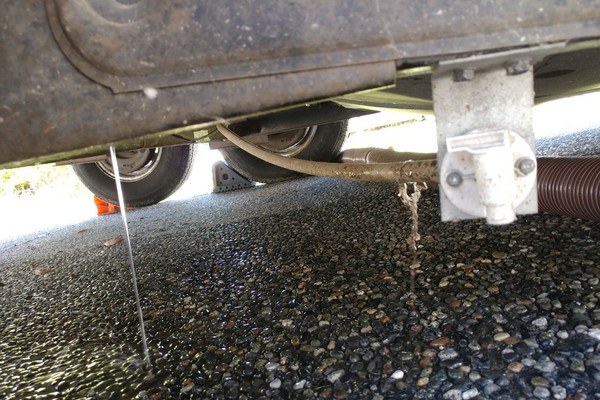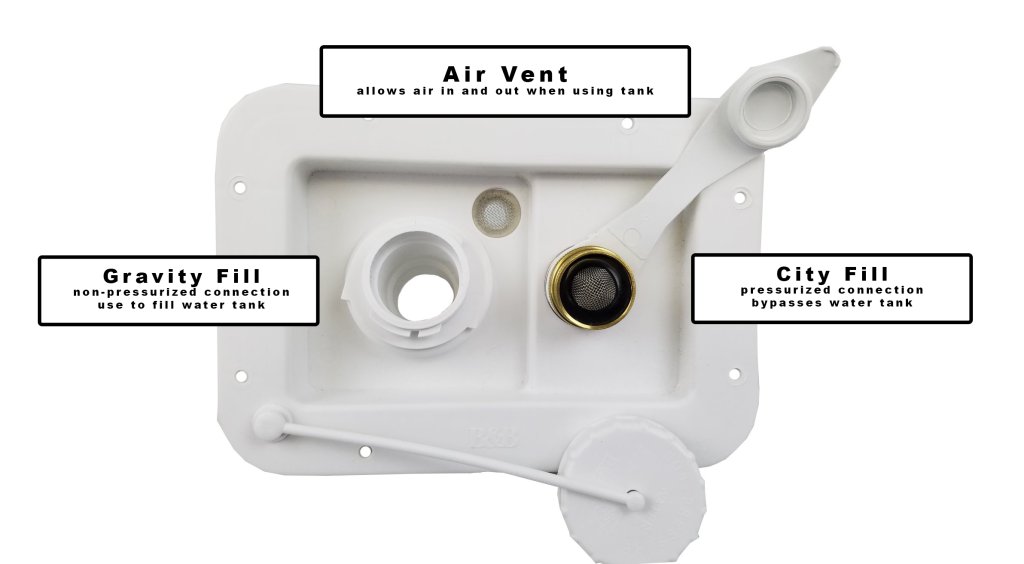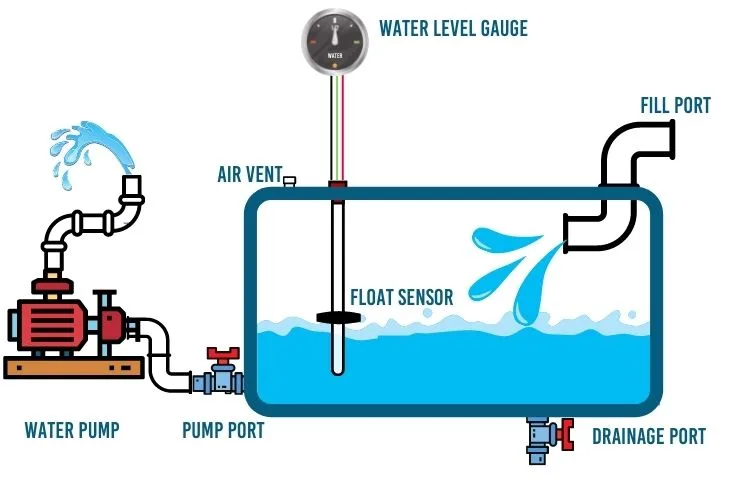A convenient recreational vehicle (RV) needs a fresh supply of water, especially when you are camping at sites that have no continuous water connection. However, the tank sometimes fills too slowly or quickly and loses more water than it can hold.
There are several reasons why the tank floods, including overfilling, overflow valve and water tank damage, mangled change-over spigots, broken or displaced O-rings, and water pump failures.
Depending on the model of your RV water tank, use the right knobs and adjustments to connect your trailer plumbing system to the city water connection and fill water according to the tank capacity.
However, you may sometimes encounter problems with overfilling the tank, causing water to spill out. Some RVs create a siphoning effect when the vehicle turns.
To avoid this problem, you can fill three-quarters of the tank and run the sink tap to flush some water or learn how to drain the RV fresh water tank safely.
Causes of RV Overflowing Problems

When the water source pumps fluid faster into the tank, the excess is expelled out, and the rapid filling can build pressure in the tank, causing an overflow. This can also damage the rig and water tank. For additional convenience, you can place a spare tank at the bed and use an external pump to fill water faster.
If you see water gushing under your RV, there’s only one explanation: that the water tank is overflowing. Some common reasons that may cause water to overspill include a manufacturing error where the overflow valve has a very low side opening, the level of the water tank not optimally set, water being replenished beyond maximum capacity, the rig not being positioned to the correct level and water pressure causing breaking or displacement of O-rings.
Once you explore the exact source of water overflowing, figure out a way to remedy the situation with some simple solutions, including installing a small water meter when you replace freshwater in the tank and replacing O-rings or the entire unit.
Other important reasons causing overflow include:
1. Overfilling
A simple reason for overflowing is that excess water than the tank capacity. If you have no installed indicators, keep a watchful eye to notice the tank filling and switch off the supply once the water reaches a certain level. You also can be attentive to peculiar sounds and minute changes to avoid expensive repairs and equipment replacement.
2. Faulty Water Pump
Locate the RV pump and examine the electric connections. Also, check if it leaks due to cracked parts or scum deposition, causing reverse flow and flooding. Check the pump for corrosion, clogged obstructions, flow of water and repair the damage.
3. Defective Valve
When the float valve cannot signal the water level in the tank, the flow is disrupted, causing spillage. Sometimes, the valve gets maladjusted and replaces position due to corrosion and cracks.
4. Damaged Tank
Examine the fresh water tank for broken or fractured parts that may cause water to leak out and overflow. If you find no signs of damage, check if the fresh water tank vent is blocked. When air cannot escape the tank, it causes the excess filled water spill over.
Solutions to RVs Overflowing

Understand the tank overflow design to know the dual function of the freshwater tank valve. It should have a functional hose, winterization hose, and hot and cold low-point drain spouts attached in appropriate positions. You should also have the second drain hose at the driver’s side or behind the water heater.
Sometimes, it is easy to explore and remedy the problem with cost-effective measures. To aid this process, you can prepare a checklist to determine the exact source of the damage.
However, suppose you cannot easily estimate the exact part causing the problem. In that case, you might need to call in a repairman to help you identify the exact problem, and this entire process may potentially cost a little more than you anticipated.

In times of valve failure, rather than replacing the whole plumbing system, you can replace the water pump. Alternatively, you can opt for economical options and rebuild the water pump. Also, check for the valve connected to the municipal water supply. At times, the failure of the city line supply valve can also hamper overflowing.
However, if no parts are broken or damaged, you can check sources of water that fill up the tank. If your freshwater tank is hooked to a city supply line, the fluid may fill up without your notice. This occurs when the quick-fill valve is on, and water in the tank fills from multiple sources, causing overflow. All you have to do is close the valve, and if it fails in an off position, you can replace it. Alternatively, you can also install an inline valve to indicate water levels and avoid backfilling.
Final Thoughts
Maintain different parts and components of your travel trailer to avoid added expenses that may occur from repairing damaged or broken equipment and replacing essentials.
Create a routine for ceasing water loss caused by overspilling, and add a shut-off valve that helps solve the siphon issue and prevent losing water. You can fix this using a hose clamp to tighten the air outlet tube, use an elbow tube with an adapter to attach the shut-off spigot, open the valve, and fill water in the tank.
Similarly, you can try troubleshooting to determine the problem source and fix it with simple economic solutions. However, if you cannot solve the mystery, hire a professional to help you along the way.

